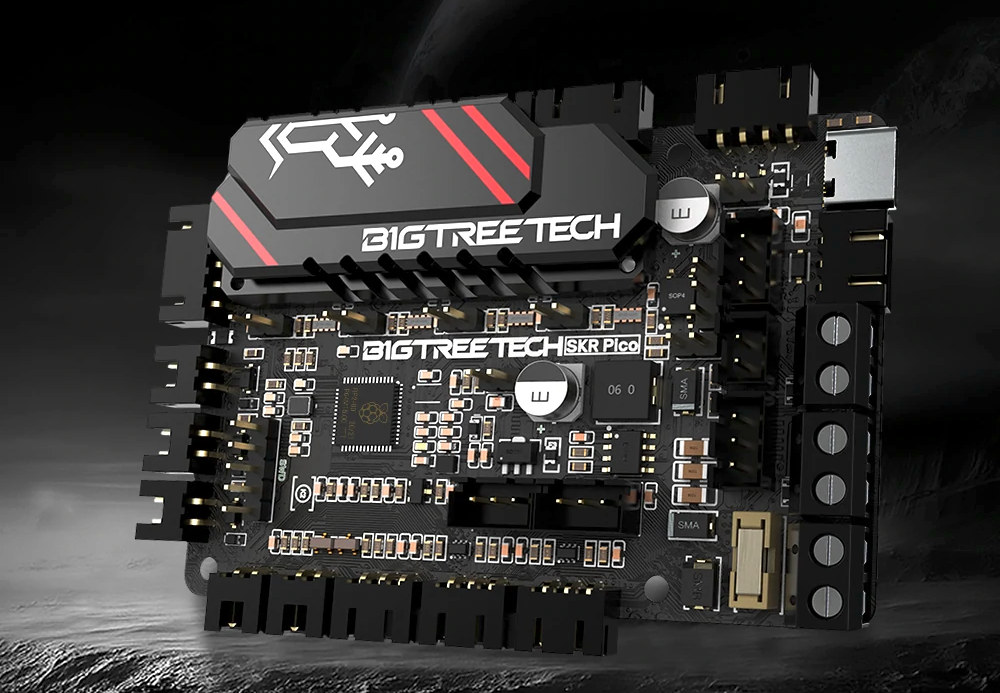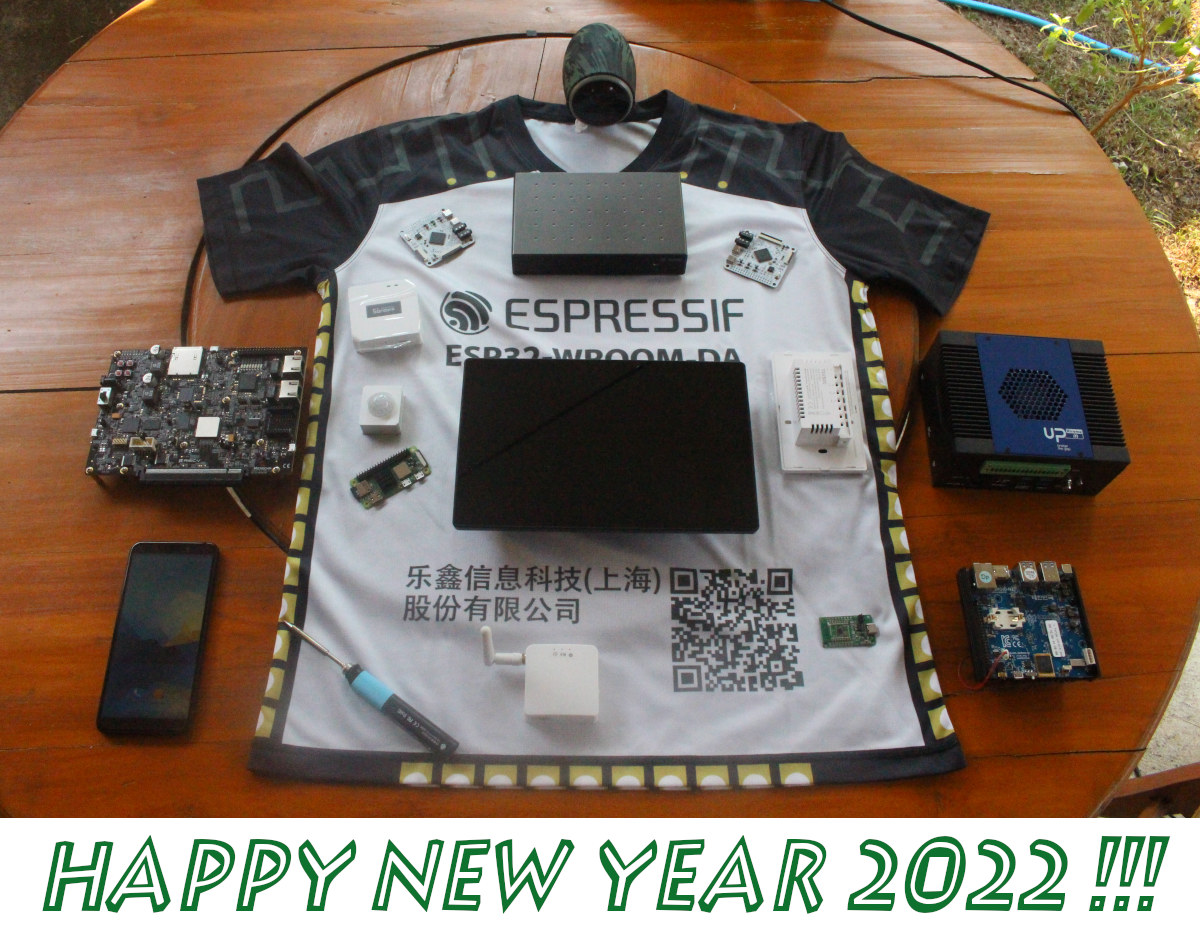The Raspberry Pi RP2040 specifications only list one USB 1.1 Host/Device hardware interface, but developer’s Sekigon Gonnoc decided to leverage the microcontroller’s programmable I/Os (PIO) to add an extra USB port that also works in host or device mode. While the C library is still supposed to be a work in progress Sekigon implemented full-speed (12 Mbps) and slow-speed (1.5Mbps) host, full-speed device, USB hub, and multi-port support. There’s even a demo with three “Pico Pico USB” keyboards acting as USB hubs and HID plus a wireless mouse to show the results. The implementation uses one PIO for the USB transmitter using 22 instructions and one state machine and another PIO for the USB receiver using 31 instructions and two state machines, as well as one 1ms loop timer for the host, and one PIO interrupt for the receiver. You’ll find the code to implement the extra USB port on […]
Round color LCD board comes in Raspberry Pi RP2040 or ESP8266 flavor (Crowdfunding)
Roundy is a board with a 1.28-inch round color LCD with 240 x 240 resolution that is offered with either a Raspberry Pi RP2040 MCU or an ESP-12E WiFi module, with the variants respectively called RoundyPi and RoundyFi. Both boards come with a micro USB port for power and programming, a button for flashing the firmware, and six pins with power signals and four GPIOs. One difference is that the Raspberry Pi RP2040 board includes a MicroSD card for data storage. Roundy specifications: MCU / module RoundyPi – Raspberry Pi RP2040 dual-core Cortex-M0+ microcontroller @ up to 133 MHz with 256KB SRAM RoundyFi – ESP-12E module with ESP8266 microcontroller @ up to 160 MHz with 160KB SRAM, 4MB SPI flash External storage (RoundyPi only) – MicroSD card socket Display – 1.28-inch round LCD with 240 x 240 resolution, 65k colors; GC9A01 SPI display driver. (It appears to be that model) […]
Maker Nano RP2040 offers Arduino Nano, Grove and Qwiic modules compatibility
Cytron Maker Nano RP2040 is board similar to Raspberry Pi Pico but with Arduino Nano form factor, a proper reset button, two RGB LEDs, single color LEDs for some GPIOs, a buzzer, as well as two Qwicc/STEMMA QT connectors that can also be used to connect Seeed Studio Grove modules using provided conversion cables. While the board mostly aims to be an Arduino Nano/Maker Nano upgrade, there are some notable differences with the I/O voltage being limited to 3.3V without 5V tolerance, and there are only four ADC inputs (A0 – A3) instead of eight on the Arduino Nano. Maker Nano RP2040 specifications: MCU – Raspberry Pi RP2040 dual-core Arm Cortex-M0+ microcontroller @ 125 MHz with 264KB internal RAM Storage – 2MB flash Audio – Piezo buzzer with mute switch Expansion 2x 15-pin headers with 22x GPIOs, 14x of which with LEDs,2x I2C, 2x UART, 2x SPI, 14x PWM, 4x […]
BTT SKR Pico – A Raspberry Pi RP2040 based 3D printer control board
BigTreeTech BTT SKR Pico V1.0 is a 3D printer controller board based on Raspberry Pi RP2040 MCU, compatible with Raspberry Pi Linux SBC’s, and specially designed for the compact Voron 0 3D printer, but also working with other models. The board comes with four TMC2209 motor drivers covered by a heatsink for cooling, as well as interfaces for temperature sensors, and a USB Type-C port to connect to the host computer, usually a Raspberry Pi board running Linux. BTT SKR Pico V1.0 3D printer board specifications: MCU – Raspberry Pi RP2040 dual-core Cortex M0+ microcontroller at up to 133 MHz with 264 kB of embedded SRAM Storage – TBD Motor drivers – Up to 4x TMC2209 drivers for X, Y, Z1, Z2, and E interfaces Temperature sensor interfaces – TH0, THB 2-way 100K NTC RTD sensors Host interface – USB Type-C port Misc – Built-in heatsink (Note: fan cooling is […]
StackyPi – A Raspberry Pi RP2040 board with Raspberry Pi Zero form factor (Crowdfunding)
SB Components’ StackyPi is a development board based on Raspberry Pi RP2040 MCU that happens to follow the Raspberry Pi Zero form factor. The board is equipped with 8MB SPI flash for the firmware, a MicroSD card socket, a micro SB port, two buttons, and a 40-pin GPIO header that makes it compatible with some Raspberry Pi uHAT and HAT expansion boards. StackyPi specifications: MCU – Raspberry Pi RP2040 dual-core Cortex-M0+ microcontroller @ up to 133 MHz with 264KB SRAM Storage – 8MB (64Mbit) SPI flash, MicroSD card socket USB – 1x Micro USB port Expansion – 40-pin GPIO header with GPIO, I2C, UART, SPI, etc… mostly compatible with Raspberry Pi header (3.3V I/Os) Misc – Reset and Boot buttons Power Supply- 5V via Micro USB port Dimensions – 65 x 30 mm (Raspberry Pi Zero form factor) The main advantage of such as board is that it can support […]
Raspberry Pi RP2040 is now available in quantities for 70 cents and up
Raspberry Pi RP2040 microcontroller has been available for one dollar in single quantities for about half a year, with at the time, 500- and 3400-pieces reel pricing to be determined. But Raspberry Pi Trading has now started to sell the chip in bulk with reels of 3,400 and 500 pieces directly to businesses for a unit price of respectively 70 and 80 cents via the new Raspberry Pi Direct website. Distributors have been selling reels for a while, but closer to 85 cents to 95 cents per unit. That basically means smaller quantities should still be purchased through distributors, but it makes more sense to purchase reels directly from Raspberry Pi Trading. Eben Upton also says they have enough wafer stock to produce 20 million chips with more on the way, so no shortage is expected. That contrasts with the current situation with many STM32 microcontrollers when some companies have […]
Year 2021 in review – Top 10 posts and statistics
As per tradition, we’ll look back at what happened during the year in the last post, and see what 2022 may have in store, plus the usual statistics from CNX Software website. The biggest story of 2021 has to be the worsening of semiconductors shortages with extremely long lead times, prices of some components going up multiple folds, constant complaints on Twitter about availability and prices. I think I even saw a website, hopefully misconfigured, showing an estimated availability of a specific STM32 MCU in 2037. This also gave rise to opportunities and board redesigns, with MotorComm Ethernet chips replacing some Realtek chips in SBCs such as NanoPi R2C and Orange Pi R1S Plus LTS, and CH9102F showing up as a replacement for CP2104 in some IoT boards. We also got some interesting Arm processors, but sadly the high-expected Rockchip RK3588 got delayed by another year, although it’s getting really […]
Mico – A USB microphone based on Raspberry Pi RP2040 MCU
Raspberry Pi RP2040 dual-core Cortex-M0+ microcontroller has found its way into Mico, a compact USB microphone with a PDM microphone providing better quality than cheap USB microphones going for one or two dollars or even 5 cents shipped for new Aliexpress users. The project started when Mahesh Venkitachalam (Elecronut Labs) was doing audio experiments with Machine Learning on the Raspberry Pi, and found out USB microphone dongles were extremely noisy with poor (distance) sensitivity, so he completed the project with a high-quality I2S microphone instead. He then had the idea of making his own USB microphone and found out Sandeep Mistry had already developed a Microphone Library for Pico, so he mostly had to work on the hardware that’s how Mico Raspberry Pi RP2040 USB microphone came to be. Mico specifications: MCU – Raspberry Pi RP2040 dual-core Cortex-M0+ microcontroller @ up to 133 MHz with 264KB SRAM Storage – 128Mbit […]










